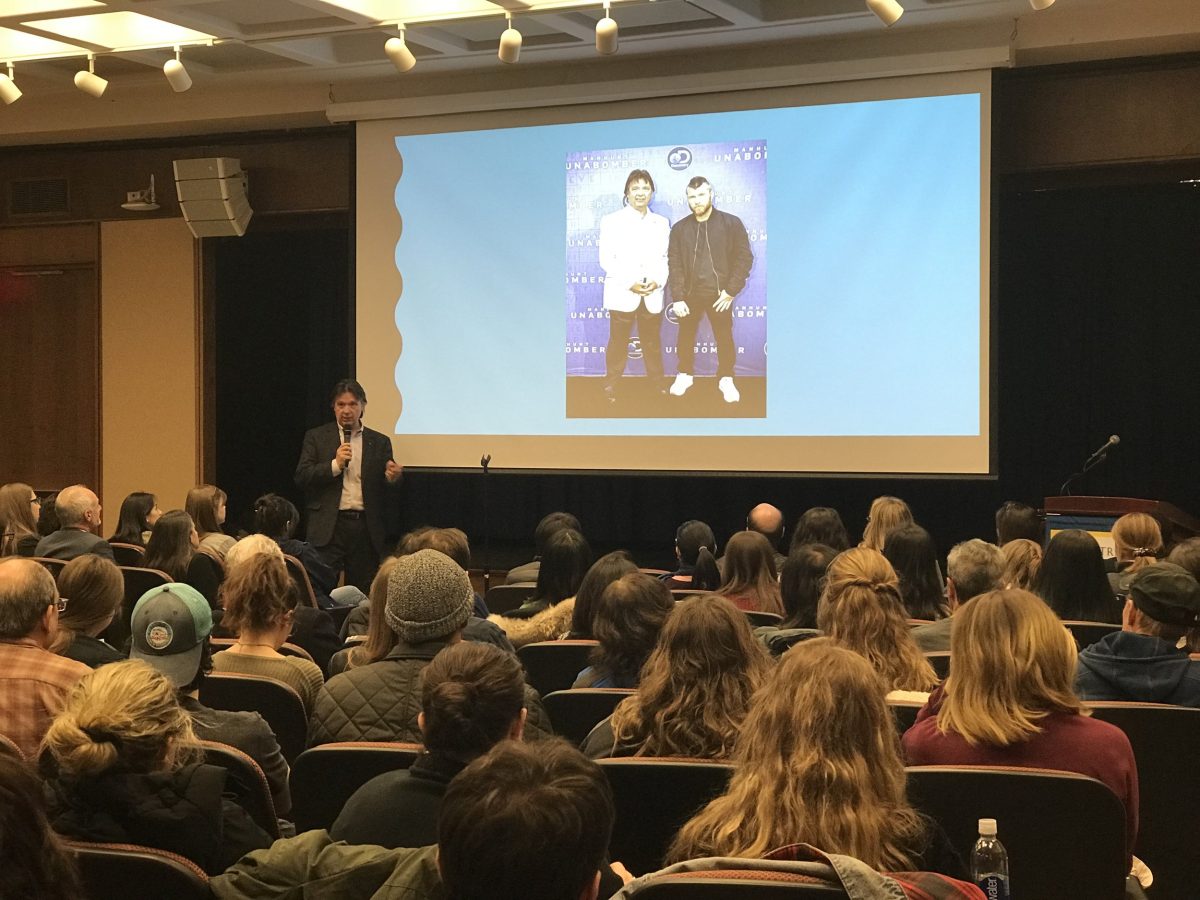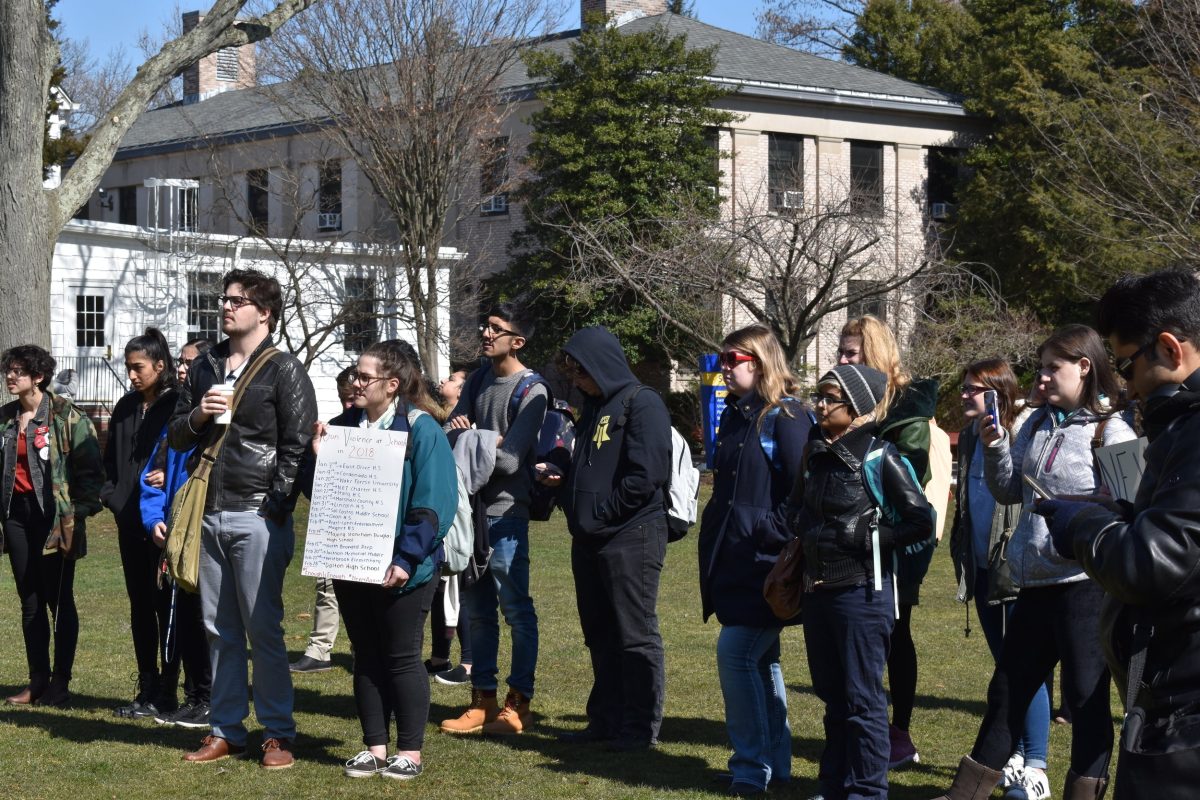Standing at 3.9 feet tall and equipped with a wide-angle camera, iPad and lateral stability control, the SAS Double – otherwise known as HofBot – intends to provide classroom experiences for Hofstra students with chronic illnesses or otherwise debilitating circumstances. Student Access Services (SAS) has introduced the new resource which allows students receiving hospital treatments or resting at home to connect to the robot and control its movements through the Double app on their phone or iPad.
“I’d say the best thing about HofBot is the amount of independence it provides for our students who are chronically ill,” said Caitlin Sullivan, the SAS testing accommodations manager. When a student connects to HofBot, their face appears on the iPad display and sound is filtered both ways, similar to FaceTime. Through HofBot, students can engage in conversation as well as participate in group work. They can also extend the iPad itself into the air to ask the professor a question. The student is present and active in the classroom as opposed to relying on professors and classmates to receive notes and assignments. “It’s all on the student which gives them that sense of empowerment back – something that they’re sometimes at a loss of while facing the obstacles of their chronic illness,” Sullivan said.
Monica Yatsyla of faculty computing services brought up the idea of the SAS Double last December when a conversation about providing a better solution to students in need arose. From the initial discussion to its arrival at Hofstra, the SAS Double became a reality in less than a month.
Victoria Simon is the SAS accommodations and communications coordinator. “It went from a dream to happening in nanoseconds,” Simon said. “We didn’t think it was likely to occur that fast. And it did, and it’s amazing.” The robot itself costs $3,500. According to Simon, this is an economic-friendly price tag when it comes to technical solutions that address student needs.
“We are the only known university in New York State using it, and the only known university to our knowledge using it in this capacity,” Sullivan said.
On Feb. 15, a Facebook video gave Hofstra students and faculty their first glimpse at HofBot as it rolled to Sbarro and ordered a slice of pizza. Sullivan hopes it will be rolling into classrooms as soon as September 2017. “That’s not to say we would like one of our students to be out due to chronic illness,” Sullivan said. “But ideally, we would like it to be up and ready to go in September just in case.”
Until then, SAS will be working to troubleshoot any of HofBot’s technical hiccups as well as make sure everyone on campus is comfortable coexisting with a robot. “It takes some getting used to that this piece of technology will replace a person, and we want it to be something that is very accepted and welcomed prior to having an impact in the classroom setting and in the community,” Simon said.
Hannah Rembrandt, a senior student who has several chronic illnesses finds HofBot to be helpful to those in similar situations.
“Oftentimes, chronically ill students are forced to go to class to keep up with material, but it’s detrimental to their learning because they’re more focused on their pain than their learning,” she said.
The name, HofBot, came from a student contest initiated through the SAS Double introduction video posted on Facebook. Several entries, 1,700 views and a Twitter poll later, the name was born.
As technology continues to develop further and faster, SAS hopes for the availability of more groundbreaking innovations to help Hofstra pave the way in equal access.
Both Sullivan and Simon agree that HofBot will only aid in the development of Hofstra’s core values and PRIDE principles.
“This institution prides itself on inclusivity. Everybody’s welcome, everybody fits in, everybody’s awesome. This is part of that deal.” Simon said. “This school is on a mission and HofBot is a part of that mission. We’re giving opportunities to every student, students who otherwise would not have had them.”
Rembrandt said, “I think it’s great Hofstra is striving to be more accommodating to their disabled students.”









